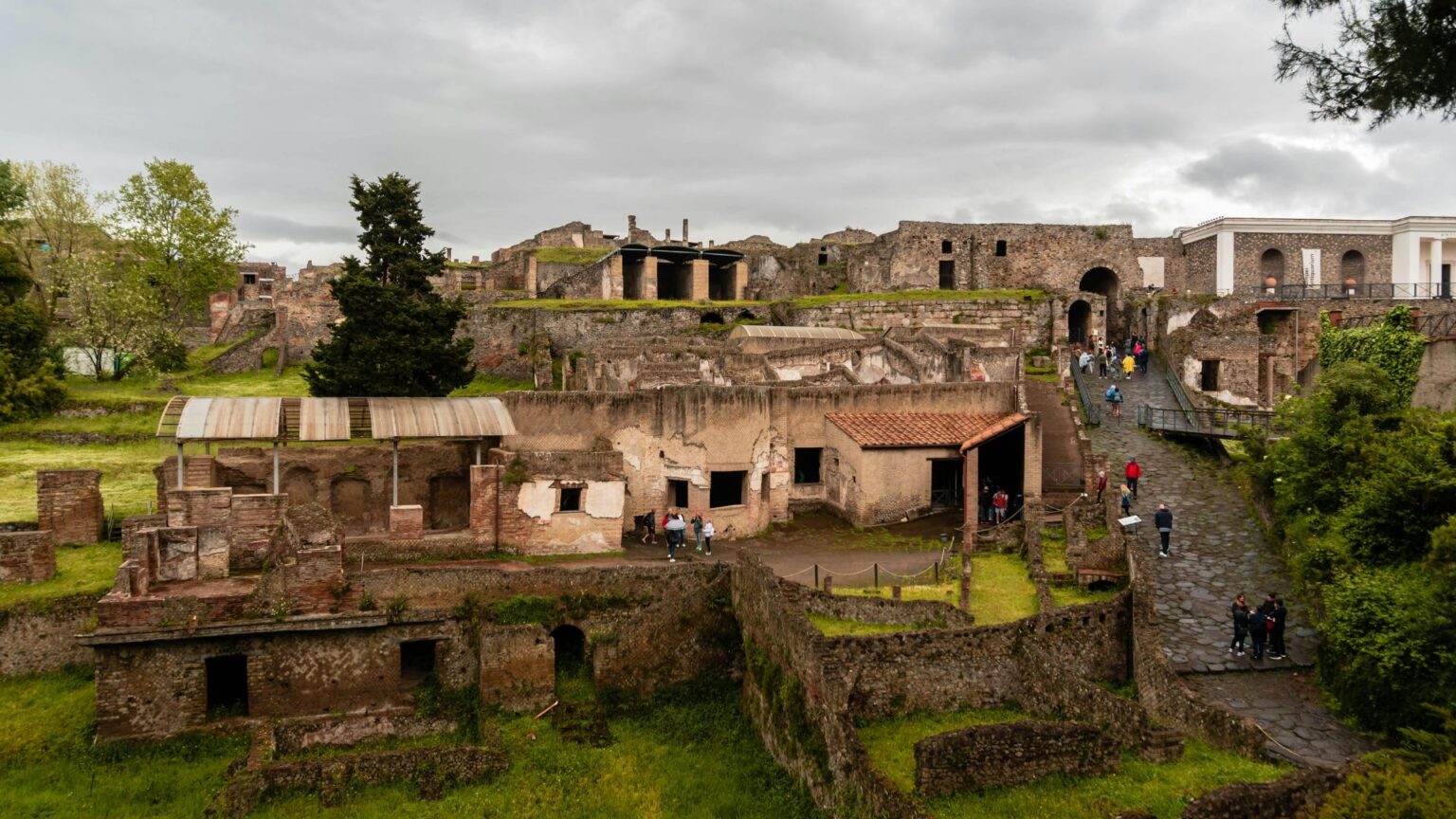Walking through the ruins of Pompeii feels like stepping into a time capsule. Buried in volcanic ash by the eruption of Mount Vesuvius in 79 AD, this ancient Roman city was frozen in time—its streets, homes, and artifacts preserved in remarkable detail. For modern-day travelers, Pompeii offers something rare: a vivid, almost eerie glimpse into the daily life of ordinary Romans nearly 2,000 years ago.
As you wander the stone streets, it’s easy to imagine the rhythms of ancient life. Homes range from small apartments to lavish villas, many still displaying colorful frescoes and intricate mosaics. These details remind us that beauty mattered to the Romans—not just in public spaces, but in their private lives too.
One of the most fascinating things about Pompeii is how much it tells us about how people lived, ate, worked, and socialized. You’ll spot ancient bakeries with stone ovens, complete with grinding stones for flour. Public baths with heated floors and changing rooms speak to a culture that valued hygiene and social interaction. Even graffiti—scratched into walls—reveals jokes, political opinions, and personal messages that feel surprisingly modern.
Pompeii’s fast food shops, or thermopolia, give us insight into Roman eating habits. These small street-side counters served hot food and drinks to people on the go—proof that “grab-and-go” dining isn’t a new idea at all. Archaeologists have even found remains of meals like lentils, olives, and bits of fish, offering clues to the everyday Roman diet.
The city also had amphitheaters for entertainment, temples for worship, and markets for trade. It was a bustling, complex place full of life—until it wasn’t. The suddenness of the eruption meant that many people never had time to flee, and their preserved forms are a somber reminder of the tragedy that unfolded.
But Pompeii isn’t just a story of destruction. It’s a rare and powerful window into the past. It shows us that Romans laughed, loved, worked hard, and tried to make their lives beautiful—just like we do today.
If you ever find yourself near Naples, take a day to explore Pompeii. It’s more than a set of ruins. It’s a real place, once full of life, now offering lessons that still echo across the centuries.




